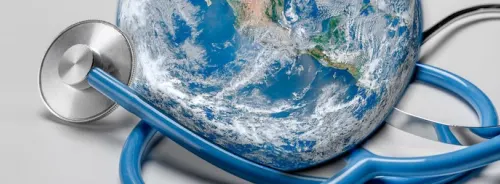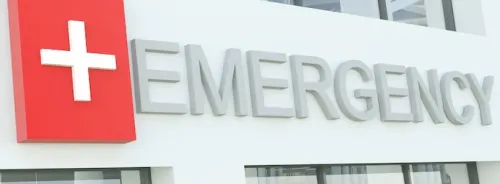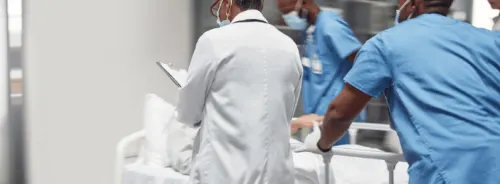ICU Management & Practice, ICU Volume 6 - Issue 2 - Summer 2006
Author
Peter Angood, , MD, FRCS(C) FACS FCCM
Vice-President & Chief Patient Safety Officer Joint Commission on
Accreditation of Healthcare Organizations Chief Patient Safety Officer & Co-Director Joint Commission International Center for Patient Safety
Dr. Peter Angood served as the President for the Society of Critical Care Medicine from January 2005 to January 2006. In this interview he shares some of his achievements during that time.
What was Your Own Personal Career Path
to Accepting the Role as President?
At an early career stage, I chose the path of critical care, intuitively recognizing that looking after critically ill and injured patients was the area where you could provide the most impact for patients. I have spent 25 years in different institutions both in Canada and in the United States, gradually gaining more experience by directing trauma centres, critical care units, and educational programmes. I have recently made the shift from a clinical academic career path to a non-clinical path by joining the Joint Commission on Accreditation Of Healthcare Organizations (JCAHO), where I am a Vice-President and the Chief Patient Safety Officer. I also co- irect the Joint Commission International Center for Patient Safety.
What have the Main Achievements of the
Society been in the Last 5 Years?
I think the main achievement for our organization has been the transition from a relatively young professional society to one that is really quite mature in terms of its membership growth, its financial stability and the overall depth of its educational programmes. These improvements have increased our influence with intensive care practitioners, other professional organizations, accrediting agencies and the US Government. Overall, the Society is now in a very good position to positively impact patient care. In addition, this organization has been on the leading edge for developing disaster preparedness documents, education programmes and organizational strategies to cope with the modern medical challenges of emergency preparedness.
What are the Main Personal Objectives You
Aimed to Achieve in Your Role as Society President?
Much of my focus for the Society was to help refine its processes of governance and broaden its scope of influence. I also wanted to further refine the strategic planning process, so that we could have a longer-range view of where we needed to go as an organization. Coupled with all that, my priority has been to reach out for a wider variety of collaborative relationships around the world. I believe we have been very successful with all of these activities.
What are the Main Challenges the
Society Recognizes in Intensive Care Now and in the Future?
There is clearly a shortage of manpower in nursing and other critical care professions. And that’s going to get worse. We have high-stress work environments that don’t have the processes and the systems in place to allow people to do their job optimally. They get stressed, they get burnt out, they come across themselves making mistakes and they don’t like it. So they quit.
Because of the staffing shortage, people are working more hours, and therefore, are finding less time to pursue training or be involved in professional societies. So, a part of our strategy as an organization is to try to help practitioners remain involved with us as a society, without necessarily having to leave home or work. We are also helping healthcare institutions to build better systems so that people can do their job better, more safely, more efficiently and with a higher quality outcome.The biggest challenge is promoting a change in the culture of healthcare.
Did Your Position, and What You Could
do as a President, Meet Your Expectations?
Becoming president for this type of an organization, that deals with so many members in a wide variety of countries and is focused towards a segment of healthcare that is really a high priority area – for me, it’s been personally gratifying to be able to contribute in whatever small way that I have. This is an organization that is gaining momentum and influence within healthcare, so it has been rewarding to see how the organization continues to meet its goals and challenges.
What has been Your Most Pleasant Experience
as President to Date?
That is so tough. I think that the best experience is near the end of your year when you’re reflecting back on what you came in to try to do and appreciate that, yes, you were able to achieve your goals.
And What has been the Worst?
We had to refocus our relationships with industry, due to the increasing scrutiny of regulation in our country, and that’s been very difficult, because it has stressed us in terms of what our values and standards are as an organization. It has been a turbulent year, but I expect we shall be a stronger organization as a result of the decisions made by the SCCM Board.





